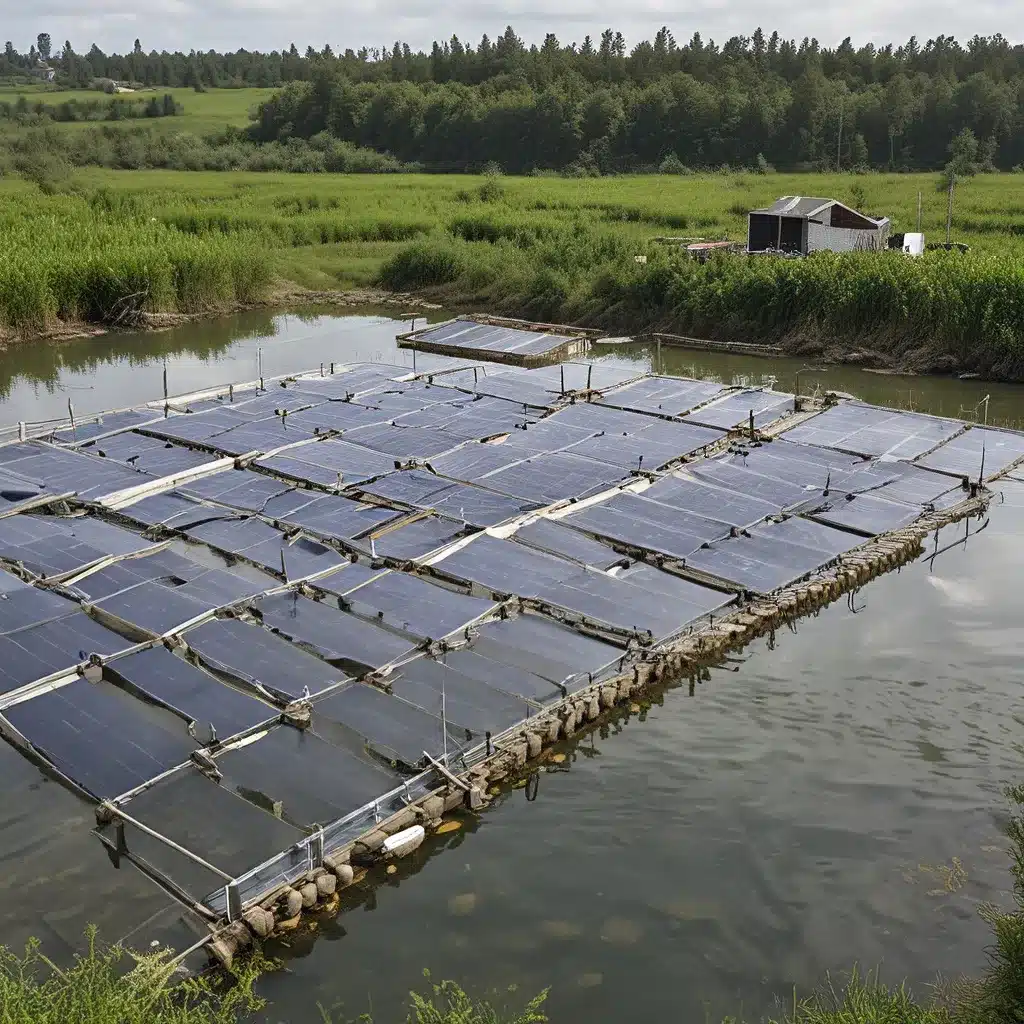
As an advocate for renewable energy solutions, I’ve always been fascinated by the remarkable potential of aquaculture – the farming of aquatic organisms like fish, crustaceans, and mollusks. It’s a field that holds immense promise for addressing the growing global demand for nutritious, sustainable seafood. But what many people may not realize is the crucial role that renewable energy can play in making aquaculture truly eco-friendly and scalable.
Harnessing the Power of the Oceans
Imagine an offshore aquaculture facility, teeming with vibrant marine life, where the energy needed to power the operation comes not from polluting fossil fuels, but from the very elements that surround it – the waves, tides, and currents of the ocean. This vision is no longer just a dream, thanks to the innovative work being done in the field of marine energy.
Recent reports have highlighted the tremendous potential for marine energy to supply the energy needs of offshore aquaculture facilities. By integrating technologies like wave energy converters and tidal turbines, these aquaculture operations can reduce their reliance on diesel fuel and tap into the boundless, renewable power of the oceans.
Not only does this approach align with the sustainability goals of aquaculture, but it also has the added benefit of co-locating the energy and food production infrastructure, streamlining operations and reducing the carbon footprint associated with fuel transportation. It’s a win-win scenario that’s poised to revolutionize the way we think about the future of seafood production.
The Aquaculture-Renewable Energy Synergy
As I delve deeper into this topic, I’m struck by the remarkable synergies between aquaculture and renewable energy. Aquaculture, with its diverse array of marine species, requires a reliable and consistent source of energy to power everything from water circulation and feeding systems to offshore vessels. And where better to find that energy than in the very environment in which these aquaculture operations thrive?
Recent studies have shown that geothermal energy can also play a crucial role in supporting aquaculture, particularly in areas where it is abundant and readily accessible. By harnessing the natural heat from the earth, aquaculture facilities can optimize water temperatures, enhance growth rates, and reduce the energy demands associated with heating or cooling systems.
It’s a harmonious relationship that extends beyond just energy production. The very infrastructure used to harness renewable energy, such as offshore wind turbines or wave energy converters, can also provide valuable habitat for marine life, creating an environment that is both energy-efficient and ecologically diverse.
Overcoming the Challenges
Of course, integrating renewable energy into the aquaculture industry is not without its challenges. The regulatory landscape can be complex, with various stakeholders and governing bodies involved in the approval and implementation of these innovative solutions. And there are also technical hurdles to overcome, such as ensuring the reliability and durability of marine energy technologies in the harsh ocean environment.
But I’m confident that with the right collaboration and investment, these challenges can be surmounted. Already, we’re seeing pilot projects and case studies from around the world that demonstrate the feasibility and benefits of this approach. From using offshore wind to power aquaculture in Norway to exploring the integration of wave and tidal energy in offshore aquaculture, these real-world examples are paving the way for a more sustainable and energy-efficient future.
A Vision for the Future
As I continue to explore the intersection of renewable energy and aquaculture, I can’t help but feel a sense of excitement and optimism. This is a field that holds the potential to transform the way we produce food, while also addressing the pressing environmental challenges of our time.
Imagine a future where offshore aquaculture facilities are powered entirely by renewable energy, their operations seamlessly integrated with the surrounding marine ecosystem. Where coastal communities can harness the power of the tides and waves to cultivate nutrient-rich seafood, creating local, sustainable food sources and economic opportunities.
And as the demand for sustainable seafood continues to grow, I believe that the marriage of aquaculture and renewable energy will be a critical component in meeting that demand. It’s a vision that, while still evolving, holds the promise of a more resilient, eco-friendly, and prosperous future for all.
So, if you’re passionate about the environment, food security, and the untapped potential of our oceans, I encourage you to explore the exciting world of renewable energy and aquaculture. Who knows what innovative solutions and breakthroughs might be just around the corner?
After all, when you combine the vast, renewable power of the elements with the bounty of the sea, the possibilities are truly boundless. And that’s a future I’m eager to be a part of.
If you’d like to learn more about how Firewinder can help you harness the power of renewable energy for your aquaculture operations, I’d be more than happy to discuss the possibilities. Just let me know!

